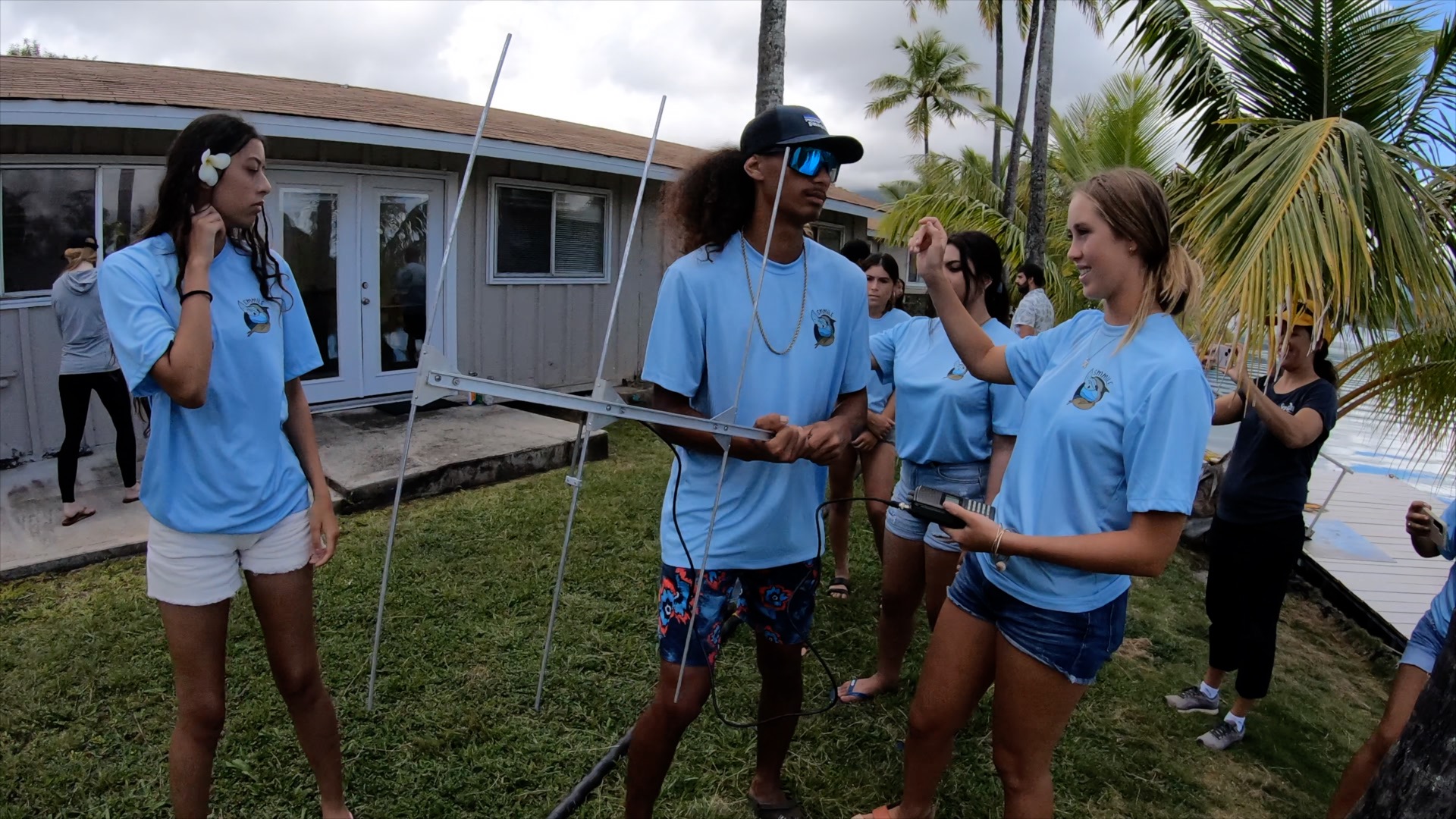HS students explore at marine biology camp at HIMB on Moku o Loʻe
 Students practice marine mammal tagging exercise.
Students practice marine mammal tagging exercise.
High school students from Oʻahu, Hawaiʻi Island Maui, Molokaʻi and Kauaʻi spent 10 days on Moku o Loʻe (Coconut Island), in a fully funded overnight experience, learning about marine mammal science at a University of Hawaiʻi at Mānoa summer program. Developed by two Hawaiʻi Institute of Marine Biology graduate students, the Summer Marine Mammal Intensive Learning Experience (SMMILE) program ran from June 2–11 and was free for the participants.
“SMMILE has been an amazing opportunity, a bunch of once-in-a-lifetime experiences and just something I wouldn’t have got if I hadn’t joined this program,” said Hulali Patacsil, an incoming senior at Kealakehe High School on Hawaiʻi Island.
Twelve incoming high school juniors and seniors participated in the SMMILE program, which was developed by UH Mānoa Marine Biology Graduate Program PhD students Kirby Parnell and Brijonnay Madrigal. This is the second year Parnell and Madrigal have run the SMMILE program.
“SMMILE is really important for high school students because it gets them that hands on opportunity to learn about different facets of marine science,” said Madrigal. “And I think engaging them early on will allow them to see potential career paths they might want to pursue in the future.”
SMMILE provides an opportunity for underrepresented high school students to learn about marine mammal science, marine protected areas and conservation. Priority was given to Native Hawaiian and Pacific Islander high school students to improve their representation rates in STEM and the field of marine mammalogy.
“SMMILE connects you to a lot of different experts in the field and also exposes you to a lot of different jobs,” said Caleb Collabo, an incoming senior at Waipahu High School. “It’s also very hands-on so you get to try out and see a lot of what you learn about throughout the entire program.”

SMMILE students practice marine mammal tagging
Overnight experience at center of research
Participants stayed overnight on Moku o Loʻe in the dormitories for the duration of the program.
High school students had hands-on learning opportunities through guest lectures, training, field trips and workshops throughout the week. Topics covered during the program included: acoustics, unmanned aerial vehicles, tagging, population studies, photo identification, stranding response, and conservation/management.
Upon completing the SMMILE program high school students gain basic knowledge of marine mammals, with a focus on Hawaiʻi’s marine mammals; applicable skills for studying marine mammals in the field and in human-care facilities; opportunities to network with undergraduate and graduate students, experts and organizations that participate in science-based conservation; and to learn to appreciate the diversity of Hawaiʻi’s marine mammals.
“This program is free,” said Parnell. “We were able to secure funding from multiple different sources, federal and state grants. So it’s just a really good opportunity for our local students to be introduced to marine mammal science.”
SMMILE is funded by the National Marine Sanctuary Foundation, the Marine Mammal Commission, an Inclusion, Diversity, Access and Success grant from the UH Mānoa Student Equity Excellence and Diversity Office, and The Next Swell. The program has also received funding through a National Oceanic and Atmospheric Administration Bay Watershed Education and Training grant for the next two years (2024 and 2025). Hawaiian Airlines also donated flight miles for the neighboring island high school students to travel to Oʻahu.
Hawaiʻi high schools that have students participating in SMMILE include: Kamehameha Schools Kapālama, Pearl City High School, Moanalua High School, Kealakehe High School, King Kekaulike High School, Molokaʻi High School, Kapaʻa High School, Waiʻanae High School, James B. Castle High School and Waipahu High School.
Read also on The Maui News, UH News, and KHON2.





